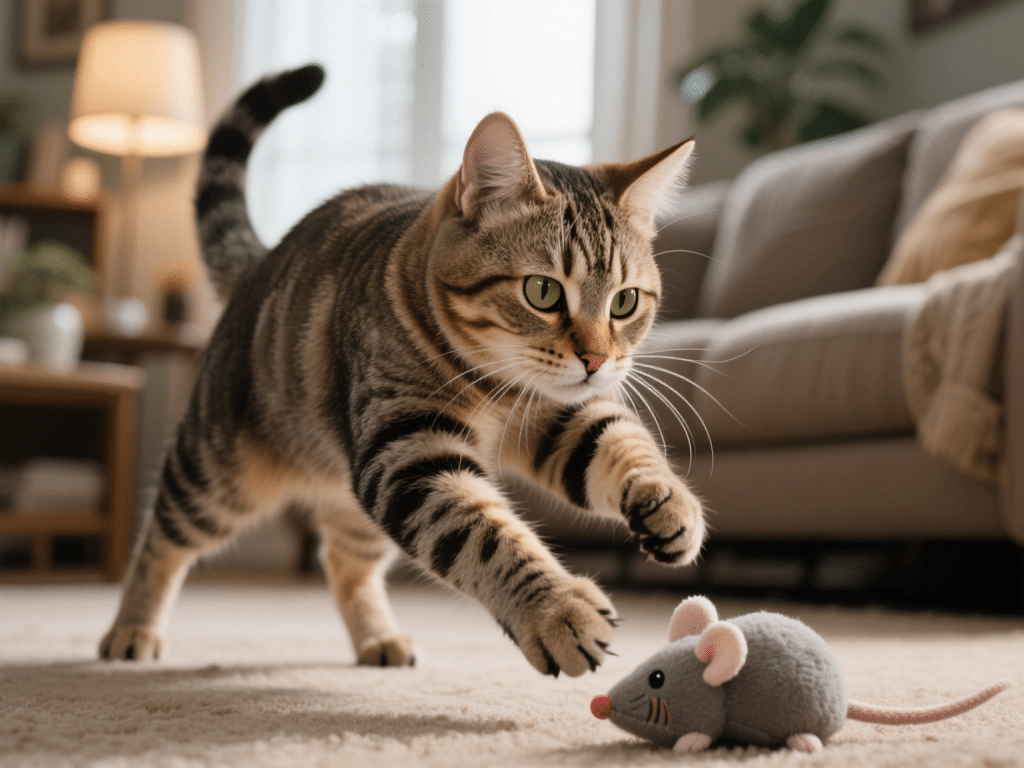
Pouncing and Play: Understanding Your Cat’s Hunting Instincts at Home
Cats may lounge for hours, but beneath that serene exterior lies a fierce predator honed b...

High‑quality nutrition underpins every aspect of your cat’s health—from glossy coat to strong muscles and robust immunity. With over a decade as a veterinary nurse specializing in feline nutrition, I’ve guided cat guardians in selecting diets that align with AAFCO standards and individual needs. This guide explains macronutrients, feeding schedules, and ingredient evaluation to empower you with actionable expertise.
Protein: Constitutes 30–50% of a cat’s dry‑matter diet. Look for named animal sources (chicken, salmon) at the top of ingredient lists.
Fat: Provides energy and essential fatty acids (omega‑3/6). Aim for 15–25% fat in dry food.
Carbohydrates: Cats have limited carb digestion—keep carbs under 10% by dry weight.
Wet Food Benefits: High moisture content supports urinary health and hydration—especially crucial for indoor cats.
Dry Food Advantages: Convenience, dental abrasion, and longer shelf life. Combine both to leverage each format’s strengths.
Kittens (0–1 year): Higher protein (40–50%) and fat (20–30%) for rapid growth. Feed 3–4 small meals daily.
Adult Maintenance (1–7 years): Balanced protein (30–40%) and moderate fat (15–25%). Two meals daily at consistent times.
Seniors (7+ years): Lower calories, higher fiber, joint‑support nutrients (glucosamine). Monitor weight—aging metabolism slows.
Special Conditions: Weight management, kidney support, or allergy formulas require veterinary guidance.
Ingredient Order: First five ingredients should be high‑quality proteins and fats; avoid unnamed “meat meals” or “animal digest.”
Guaranteed Analysis: Compare percentages on a dry‑matter basis; convert wet food values for accurate comparison.
AAFCO Statement: Ensures nutritional adequacy for the targeted life stage.
Portion Control: Use gram scales—eyeballing leads to overfeeding and obesity.
Consistent Schedule: Free‑feeding can promote grazing and weight gain; scheduled meals encourage healthy portions.
Hydration Stations: Pair meals with fresh water fountains to entice drinking.
“Tailoring nutrition isn’t one‑size‑fits‑all—monitor body condition scores monthly,” advises feline nutritionist Dr. Elena Novak. “Adjust portions and formulas based on activity level and life stage.”
By mastering nutrient profiles, label literacy, and feeding routines, you’ll fuel your cat’s vitality and longevity—laying the foundation for years of robust health and joy.

Cats may lounge for hours, but beneath that serene exterior lies a fierce predator honed b...

There’s nothing quite like a persistent “meow, meow” echoing through the house at 3�...

Dogs are intelligent, social animals who thrive when their minds and bodies are both engag...

IntroductionParakeets (budgies) are intelligent, social birds capable of mimicking human s...

IntroductionMany cat owners enjoy late-night bonding sessions with their feline friends, b...

IntroductionWelcoming a new baby is a joyous time—but it can also be stressful for dogs....
Comments on "Optimal Feline Nutrition: Building a Balanced Diet for Lifelong Health" :